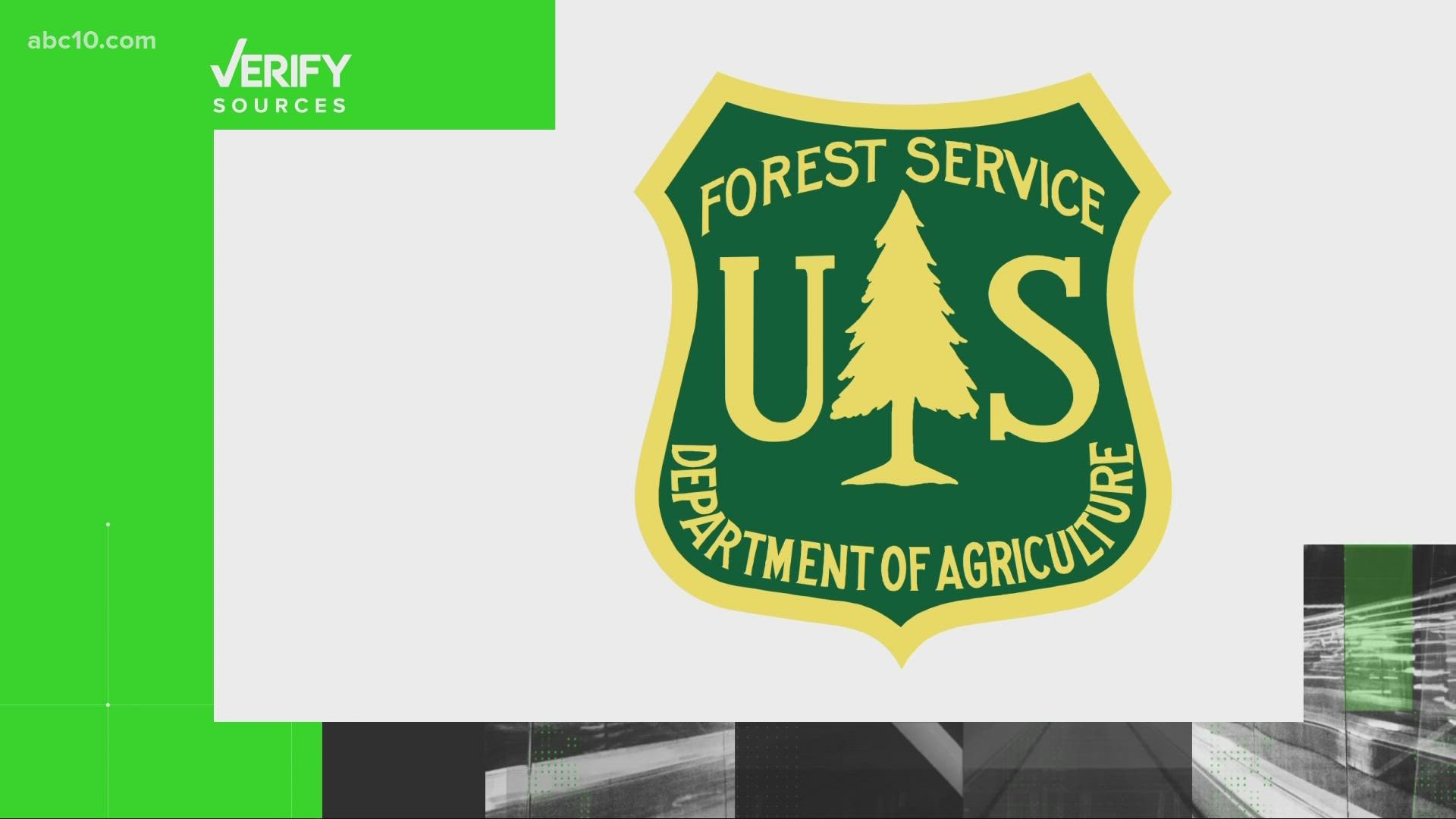SACRAMENTO, California — As several large wildfires rage on, ABC10's Verify team is working hard to separate fact from fiction.
A viewer asked us "Why doesn't someone run a story on the policy of the US Forest Service not to put fires out started by lightning on forest service lands. Policy resulted in Tamarack fire and probably other fires if investigated."
Here is what we verified:
The Question:
Does the USFS have a 'let it burn' policy specific to fires started by lightning?
The Sources:
The US Forest Service, Randy Moore, Chief of the U.S. Department of Agriculture’s (USDA) Forest Service, and Ken Pimlott, former Cal Fire Director and Chief.
The Answer:
The Tamarack Fire was started by lightning over a month ago and six days later, the US Forest Service said they decided to not send fire crews due to safety concerns and that, at the time, it posed no threat to the public or infrastructure.
Now, that same fire has burned just under 69,000 acres and destroyed homes.
"The weather changed and conditions were different the fire literally exploded," For Cal Fire Director Ken Pimlott said.
Pimlott wrote an op-ed in the SF Chronicle at the end of July titled A timid U.S. Forest Service response to the Tamarack Fire put California at risk.
"Across the state, it's critically dry and you cannot expect fires to stay in one place if left unchecked. They can burn 15 miles in one day we are seeing it on the Dixie Fire," Pimlott said.
Congressman Tom McClintock spoke about this on the house floor and later tweeted, in part, "Sorry, USFS - Fire is NOT our Friend: It's dangerous nonsense to 'monitor' incipient fires in today's forest tinderbox, even if they seem to pose no immediate danger."
The LA Times wrote an article titled: California says federal 'let it burn' policy is reckless as wildfires rage out of control.
In a statement to ABC10, the US Forest Service said they do not have a "let-it-burn policy." Their statement reads:
Every fire has a suppression objective, and our response strategy is to only commit our fire resources in instances where they have a high probability of success and they can operate safely and effectively. The Forest Service and the country is facing a national crisis in the management of wildfire. We are at Preparedness Level 5, the highest level, and continue to face critical firefighting resources limitations. The agency has not explicitly managed fires for resource benefit this year since arriving at National Preparedness Levels 5; and historically only in rare situations at National Preparedness Level 4. Again, every Forest Service fire has a suppression strategy. Forest Service Chief Moore’s letter to staff provided clear direction on wildfire management during these times of extreme conditions. At this time, with extreme fire conditions present and the increasing presence of COVID-19, we must prioritize the finite amount of firefighting resources that are available. Our primary focus moving forward will be on fires that threaten communities and infrastructure. Until further notice, managing fires for resource benefit is a strategy we will not use. Additionally, ignited prescribed fire operations will be considered only in geographic areas at or below preparedness level 2.
This is the prudent course of action now in a situation that is dynamic and fluid. When western fire activity abates and when it is safe to do so, we will resume using all the tools in our toolbox, including wildfire and prescribed fire in the right places and at the right time to mitigate future extreme fire behavior.
What they do have is something called a "fire use policy." Meaning, if a fire is started naturally by lightning, they have the ability to monitor the situation if it does not pose an immediate risk of damage to homes or risk of people's lives.
"These fires know no boundaries. They are burning with such intensity," Pimlott said.
On Monday, USFS Fire Chief Randy Moore wrote a letter to explain a new USFS position. Moore said, "At this time, for all of these reasons, managing fires for resource benefit is a strategy we will not use."
This in turn means, waiting to see what happens with a naturally-started fire won't happen anymore they say. We can verify, the USFS does not have a "let it burn." policy according to them. They do have a fire use policy but they are no longer using that policy as our fire season continues to be one of the worst on record.
If you have something you'd like us to verify, text us at 916-321-3310
Continue the conversation with Madison on Facebook.

